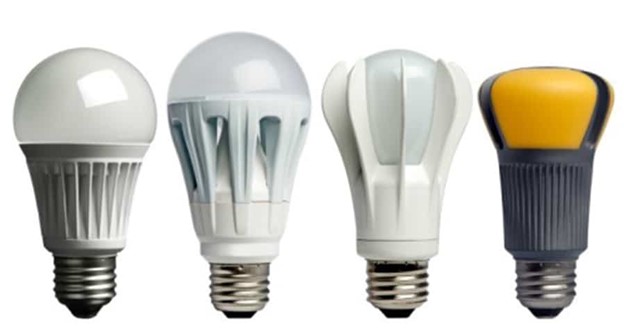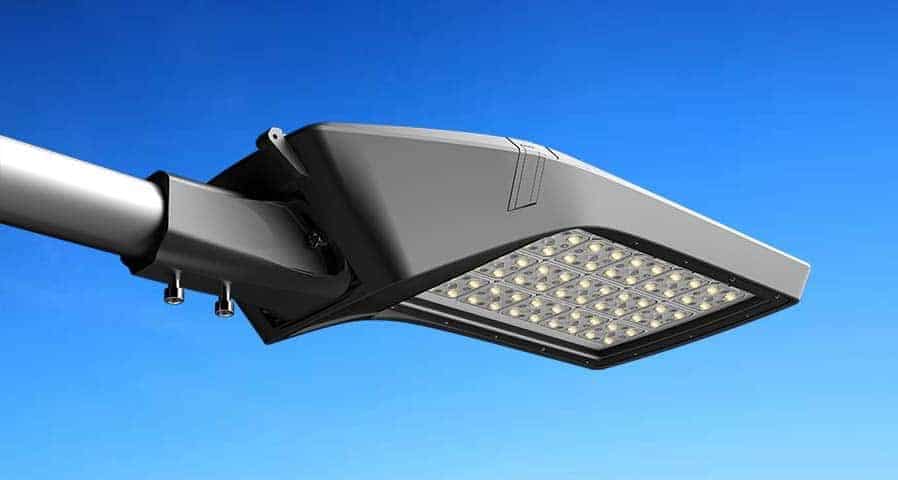Want to know how to measure light or how many watts a lamp consumes? You’ll find the answers to these questions, plus calculations and more in this in-depth 2-part guide to lighting measurements. Part 2 of our lighting measurements blog covers Illuminance, Luminance, Lux, and Foot-Candle measurements.
What are Lumens?
Luminous power or luminous flux measures the amount of light the source displaces in all directions per second and is expressed in lumens (lm). Luminous flux only measures light radiating over visible wavelengths, around 400-750km.
Definition of lumens: A lumen is a unit of luminous power or flux.
Luminous power or flux is marked in lumens on a lamps packaging and it’s an objective measurement. Lumens measure the light in all directions from the source. These light measurements vary according to the space.
Terms like foot-candle and lux are often used to describe the light’s intensity.
Understanding Luminous Intensity
Candela is a unit of luminous intensity used as an objective measurement of the amount of light from one angle. It’s not an effective light measurement for illuminance, but it is commonly used to measure candela in flashlights, spotlights, and laser pointers.
Definition of Candela: Luminous intensity is measured in candela. The term comes from the mistaken belief that one candle emits one candela. Light measurement rules have become stricter with the current definition reading,
“The candela is the luminous intensity, in a given direction, of a source that emits monochromatic radiation of frequency 540 x 1012 hertz and that has a radiant intensity in that direction of 1/683 watt per steradian.” From http://physics.nist.gov/cuu/Units/current.html
Lumens and Luminous Intensity Recap
To sum everything up,
- Luminous flux measures the total amount of light emitted by the light source
- A lumen is a unit of luminous flux
- Luminous intensity measures the amount of light emitted in a single direction
- A candela is a unit of luminous intensity
One way to explain lumens and candelas is to imagine placing a transparent sphere one meter over a lit candle. The candle produces one candela evenly in all directions. When you cut a 1 square meter hole in the center of the sphere, you have one lumen of light.
Putting it into practical terms,
When you want an all-directional light, look at the lumens. When you want to know a flashlight’s level of brightness, check the candela rating.
Calculating Lumens and Candela
- 1 lm = one lumen
- 1 cd = one candela
- sr = steradian (square radian, one square radian of a general sphere can be calculated using an equation A = r², with r representing the radius of a sphere.
The formula will look like this,
- 1lm = 1cd * 1
- 1 lumen = 1 candela; a light source with 1 candela intensity produces 1 lumen of luminous flux in a sphere with 1 square meter surface area.
The same equation will also give you the luminous flux from the sphere. The first step is to calculate the surface area of the sphere.
- 4π r² = 4*3,14*1=12,56sr
Taking the previous equation 1lm = 1cd * sr, and the light intensity of 1cd, along with the surface area of the sphere at 12,57m², we can calculate:
- 1lm = 1cd * 12,57sr
- lm= 12,57; a light source with 1 candela intensity produces 12,57 lumens of luminous flux in a sphere with a 1 meter radius (or 12,57m² surface area).
You use the same calculation to find the candelas.
- 1cd = 1lm / sr
The new formula 1cd = 1 lm /sr and inputting a light flux of 700lm and a sphere surface area of 12,57m², we can calculate the light intensity of the bulb:
- 1lm/sr = 1cd
- 700lm/12,57sr ≈ 56 cd
The same formula also gives you the steradian. Using this example, the answer is one steradian.
To learn the calculations needed to find the illuminance and foot-candles, you will need to read part 2 of the lighting measurements blog. Don’t worry it is already available, and you can read it here.
Lumens, Candelas, and Viewing Angles
Using the equation 1cd = 1lm / sr, you can find the viewing or apex angle by increasing the candelas or luminous intensity and decreasing the steradians. The opposite applies when you are using the equation to show the viewing angle is proportional to the fixture’s luminous intensity.
When you want to determine the apex angle of a light beam, you need to use a different formula. The apex angle is located at the axis point where the luminous intensity decreases by 50%.
Measuring the apex angle in degrees,
Ω = 2π(1−cos(α/2))
Using an apex angle of 40°, the equation looks as follows,
- Ω = 2π (1−cos (40/2))
- Ω ≈ 2*3,14*(1-0,94)
- Ω ≈ 6,28*0,06
- Ω ≈ 0,38sr
Calculating the luminous flux of a light fixture with a 1 candela intensity, and a viewing angle of 40°, your new equation is,
- 1lm = 1cd * sr
- lm = 1*0,38
- lm ≈ 0,38
The full equation to find the apex angle or steradians is,
- Φ=I2π(1−cos(α/2))
- lumens = candelas*2π*(1-cos (apex angle/2)
- Φ – luminous flux (lm)
- I – luminous intensity (cd)
- π – constant (≈3,14)
- α – apex angle (°)
You can find the candelas by inserting the lumens and steradians into this equation,
- I=Φ/(2π*(1−cos½*α))
- candelas = lumens/(2π*(1-cos½*apex angle))
To put the equation into practical use. You have a lamp producing 3cd luminous intensity with a 40° apex angle, and you want to know the lumens for the light source your equation is,
- Φ=I2π(1−cos(α/2))
- lm = 3cd*2*π*(1-cos (40°/2))
- lm = 18,84*0,06
- lm ≈ 1,13 (lighting fixture with 3cd luminous intensity at 40° apex angle would produce a luminous flux of approx. 1,13 lumens)
Increasing the viewing angle to 70° and raising the luminous intensity to 3cd, the lumen output should also increase.
- lm = 3cd*2*π*(1-cos (70°/2))
- lm ≈ 3,39
Increasing the apex angle, and leaving the luminous intensity the same, shows the lumens output also increases. But, what about testing the equation in reverse? If the apex angle remains at 70° but the light intensity decreases to 1.5cd the light source should produce fewer lumens. Using the formula,
- lm = 1,5cd*2*π*(1-cos (70°/2))
- lm ≈ 1,69
The light measurement shows the lumens decreasing from 3,39 to 1,69.
Recapping Lumens and Candelas
A lumen is a unit of luminous flux that measures the total amount of visible light emitted from a fixture in all directions. Luminous flux measures light emitted in a single direction. A candela is a unit of luminous flux.
To calculate lumens when you know the candelas and the angle of light you use the equation,
- 1lm = 1cd * sr.
Candelas described the light’s brightness at an angle and often applies to flashlights, spotlights, and laser pointers. Lumens compare the illuminance of bulbs producing light in all directions.
A good tip to remember is a wider beam angle usually indicates lower light intensity. The opposite is true with a narrower beam angle. The light is brighter.
In part 2 of our lighting measurement guide you will learn about illuminance, luminance, lux, foot-candles, and how to measure light! You can click here to read the next blog.
Lighting Upgrades with Action Services Group
Knowing your lighting measurements can help when upgrading your lighting systems. This can seem like a labor-intensive process, and it can be without a lighting professional. To speak with a lighting specialist about your upcoming lighting project, contact Action Services Group by calling 610-558-9773, email [email protected], or schedule a call that fits your needs by clicking the button below.








































0 Comments